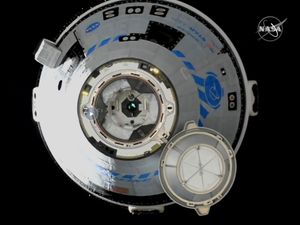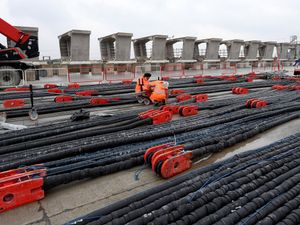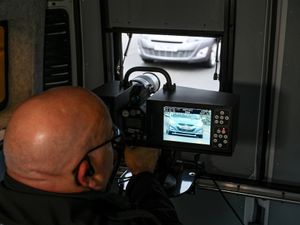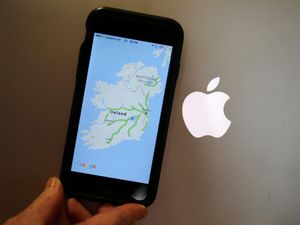Boeing docks crew capsule to space station for first time
Nasa has finally realised its long-time effort to have crew capsules from competing US companies flying to the space station.

With only a test dummy aboard, Boeing’s astronaut capsule has pulled up and parked at the International Space Station for the first time, a huge achievement for the company after years of false starts.
With Starliner’s arrival, Nasa has finally realised its long-time effort to have crew capsules from competing US companies flying to the space station.
SpaceX already has a running start.
Elon Musk’s company pulled off the same test three years ago and has since launched 18 astronauts to the space station, as well as tourists.

“Today marks a great milestone,” Nasa astronaut Bob Hines radioed from the orbiting complex.
“Starliner is looking beautiful on the front of the station,” he added.
The only other time Boeing’s Starliner flew in space, it never got anywhere near the station, ending up in the wrong orbit.
This time, the overhauled spacecraft made it to the right spot following Thursday’s launch and docked at the station 25 hours later.
The automated rendezvous went off without a major hitch, despite the failure of a handful of thrusters.
If the rest of Starliner’s mission goes well, Boeing could be ready to launch its first crew by the end of this year.
The astronauts likely to serve on the first Starliner crew joined Boeing and Nasa flight controllers in Houston as the action unfolded nearly 270 miles up.
Nasa wants redundancy when it comes to the Florida-based astronaut taxi service.

Administrator Bill Nelson said Boeing’s long road with Starliner underscores the importance of having two types of crew capsules.
US astronauts were stuck riding Russian rockets once the shuttle programme ended, until SpaceX’s first crew flight in 2020.
Boeing’s first Starliner test flight in 2019 was plagued by software errors that cut the mission short and could have doomed the spacecraft.
Those were corrected, but when the new capsule awaited lift-off last summer, corroded valves halted the countdown.
More repairs followed, as Boeing chalked up nearly 600 million dollars (£480 million) in do-over costs.
Before letting Starliner get close to the space station on Friday, Boeing ground controllers practised manoeuvring the capsule and tested its robotic vision system.
Everything checked out well, Boeing said, except for a cooling loop and four failed thrusters.

The capsule held a steady temperature, however, and had plenty of other thrusters for steering.
Once Starliner was within 10 miles of the space station, Boeing flight controllers in Houston could see the space station through the capsule’s cameras.
“We’re waving. Can you see us?” joked Mr Hines.
There was only silence from Starliner.
The commander’s seat was occupied once again by the mannequin dubbed Rosie the Rocketeer, a space-age version of the Second World War’s Rosie the Riveter.
The gleaming white-with-blue-trim capsule hovered 33ft (10 metres) from the station for close to two hours – considerably longer than planned – as flight controllers adjusted its docking ring and ensured everything else was in order.
When the green light finally came, Starliner closed the gap in four minutes, eliciting cheers in Boeing’s control centre.

Applause erupted once the latches were tightly secured.
“These last 48 hours have just been a barnstorm, so it’s going to be very good to sleep tonight,” said Mark Nappi, vice president and director of Boeing’s commercial crew programme.
It was a double celebration for Nasa’s commercial crew programme director Steve Stich, who turned 57 on Friday.
“What an incredible birthday it was,” he told reporters.
The space station’s seven astronauts will unload groceries and gear from Starliner and pack it up with experiments.
Unlike SpaceX’s Dragon capsule that splashes down off the Florida coast, Starliner will aim for a landing in New Mexico next Wednesday.





